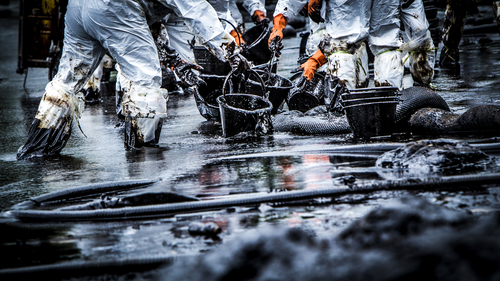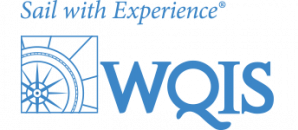At-Sea Spills: A Shoreline Response

A marine oil spill requires immediate action based on a contingency plan that has been tested through simulation. The priority goals are to contain and recover what oil you can and to assist natural processes to disperse or biodegrade what oil you cannot recover. In major oil spills, the at-sea response almost always fails to fully protect coastal resources, according to the U.N.’s Environmental Program (UNEP). That is partly because protective strategies are rarely employed to the extent possible and partly because weather and sea conditions make complete remediation almost impossible. Moreover, the most commonly transported oils have a high viscosity, making them more difficult to deal with through dispersants. Additionally, the requisite extent of the response—in terms of manpower, speed and equipment—may be underestimated or hamstrung by adverse conditions.
All these factors mean that oil shippers must develop and update plans for a shoreline response to a spill. These plans need to take into consideration containment, cleanup and disposal of oil and debris. The International Tanker Owners Pollution Federation (ITOPF) says on the U.N.’s Global Marine Oil Pollution Information Gateway, “Priorities for protection and cleanup will need to be agreed [upon,] and care must be taken to ensure that the techniques selected do not do more damage than the oil alone.”
With that cautionary advice in mind, oil-shipping companies should establish good relations with regulators, spill-response companies and environmental experts. If there isn’t someone spearheading that risk management duty at your company, consider establishing such a role.
Monitor, Protect, Scrub and Dispose
It should become obvious within a short amount of time—a few days most likely—whether or not coastal areas are threatened by an oil spill at sea. Aerial photography or video can be of great assistance in measuring the flow and spread of the pollutant. Attentive monitoring of visual data should give the shoreline-response team time to organize and deploy the necessary equipment and people. Keep in mind that not only are beaches involved, marshes, bays and rivers can be affected by the oil, dispersants or organisms used in the at-sea response phase.
The U.S. Environmental Protection Agency (EPA) suggests employing scare-away tactics to reduce the population of animals in potentially hazardous zones. However, even though the animals have fled, you will still be working in their homes—some of which may be breeding grounds and contain crucial micro-organisms—so it is important that the environment be disturbed as little as possible.
Physical methods are almost always necessary to tackle coastal and inland cleanup. While evaporation, oxidation, biodegradation and other natural processes will, over time, cleanse affected areas, rapid environmental recovery is usually preferred. That requires human and mechanical intervention, such as wiping with sorbent materials (substances that collect the molecules of another substance through sorption—the combined process of absorbing and adsorbing), pressure washing, raking and bulldozing, according to the U.S. EPA. You can see how important it is to coordinate the onshore response with environmental-habitat specialists. The effect of machines and chemicals on the plant life and non-evacuated biological life of the area has to be quantified, and response processes must be adapted to minimize ecological consequences. All in all, it is a very complex endeavor requiring many layers of coordination and highly regulated scheduling of implementation.
The disposal of oil and debris is a primary consideration and can become a substantial problem both during and after cleanup, the ITOPF warns. This list of debris resulting from an oil spill is lengthy but typically includes at least oily cargo, shoreline sediment, dead animals, dead plants, contaminated supplies, and used protective clothing or personal protective equipment. The ITOPF says, “Waste can sometimes amount to as much as 10 times the volume of oil originally spilled.” Without adequate arrangements, logistical problems having to do with debris can interfere with a competent (and successful) response.
The ITOPF encourages response teams to minimize the amount of oily waste by keeping clean material separate from contaminated material, washing and re-using equipment and supplies when possible, and reprocessing as much oil as feasible through a refinery or recycling plant. Establishing rules for handling contaminated supplies and debris is a primary part of any response plan. You will also have to secure temporary storage sites for waste collected throughout the project, keeping in mind that oil and sunlight can break down the materials many containers are made from. Fires and leaks from waste storage sites must be guarded against. Professional incineration is widely used, and some recycling of oily sand into road construction is an option. But in many cases, the ITOPF says, landfill is the only feasible option for oil spill waste. And that means you must be extremely careful to follow all regulations and deal with the most reputable landfill brokers.
The U.S. National Oceanic and Atmospheric Administration offers a Shoreline Cleanup and Assessment Technique, popularly known as SCAT, that is a systematic method for surveying an affected shoreline after an oil spill. We will talk about that in our next article, as it contains implications for longer-term concerns over human injury and food-supply contamination.
Since 1971, WQIS has been involved in more vessel pollution events than any other marine pollution provider. Having the right team immediately available in the event of a loss is crucial for mitigating damages, getting clients back to an operational status and the claims process. Our team is made up of an extensive network of trusted professionals to assist from the moment a spill occurs until the spill is cleaned up. For more information about our insurance solutions and services, call us at 212-292-8700.
